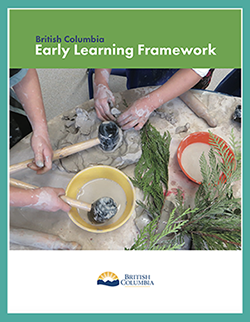Module 6: Living Inquiries – Identities, Social Responsibility, and Diversity
Family Origins, Cultural Background, Place of Origin, Allegiance and Affiliation, Citizenship, and Other Identities
Children become confident in their identities, including cultural, racial, physical, spiritual, linguistic, gender, social, and economic.
Critically Reflective Questions
- What opportunities do I provide for children to see their cultural background reflected in my program? How might I include cultural books, stories, or artifacts?
- What opportunities do I provide for children to see diverse abilities reflected in my program? How might I include books, stories, or artifacts?
- In what ways are children able to discuss and learn about different worldviews?
- How are children encouraged to think, speak, and learn about their identities? What does this look like to me?
- How can connections to Elders, knowledge holders, families, and community members enhance children’s pride in identity?
- How do I encourage children to become confident in their identities, including cultural, racial, physical, spiritual, linguistic, gender, social, and economic? Could discussion with colleagues generate new ideas about this?
- How can I make sense of this quote in relation to my practice?

Case Study: Family origins, cultural background, place of origin, allegiance and affiliation, citizenship, and other identities
An educator in a grade 3 classroom decided to hold a “Family Festival.” The children were asked to bring something from home that would show where their family came from. Many of the children brought photos, food, and family artifacts or treasures. Each child was able to tell a story about their identities in the context of their family origins. The educator took photos of the children engaging in the Family Festival and later displayed the photos in the classroom.
The educator extended the learning by asking the children to discuss where in the world their families were from, using a map to show different parts of the world. Taking it further, the educator asked to children to speak about their family origins, cultural background, allegiance, affiliation, and citizenship.
Reflective Questions
In your practice, how might you provide opportunities for children to explore and become confident in their identities?
What opportunities do children have to see diversity reflected in your classroom?
How are children encouraged to learn about multiple perspectives and worldviews?
